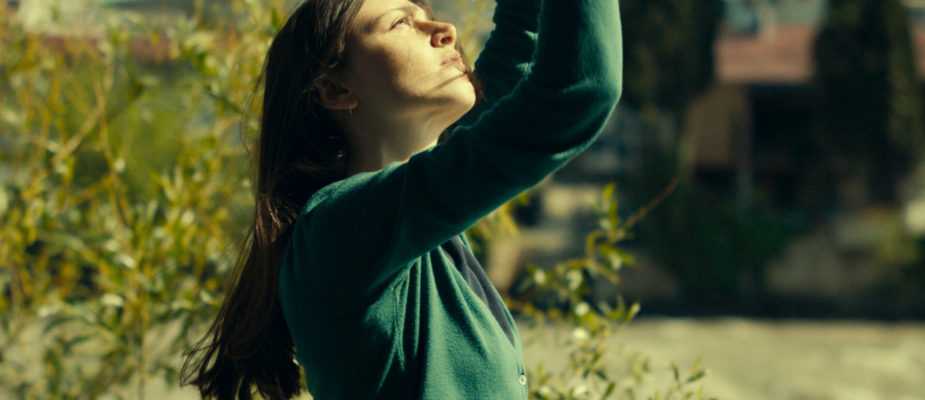Before arriving at my list of my favorite new films of 2021—an annual right-of-passage that I have undertaken in private or public since 1999, with my first list mercifully lost to time*—let me begin with my no less routine explanation for why I am offering the following set of choices to my Museum readership that 1) you may not have heard of, 2) you may not like if you have, or 3) you already know everything about (and could care less what my eighth or fifteenth favorite film of 2021 is). The simple answer is that I think it is good for both you and I as film viewers.
For me, it is a matter of taking inventory, of trying to provide shape to my on-going exploration of a perpetually rich (for all those years since 1999) and ever-evolving art form that places a special demand on the viewer and connoisseur in the form of the time it takes to watch any given film. (Also, in knowing that I am probably going to want to keep up the list habit each December, it is also a means of keeping me honest for the two hours here and there that compiling such a list, and its many more misses, requires.)
For you the reader, it can be a list of films that if they are unfamiliar, provides the potential for new and different cinematic experiences—or better examples of more familiar storytelling styles (see #’s 3, 10 and 11, among others). If the films were not to the reader’s taste, then maybe it leads to a reconsideration or at least tests their previous judgements. And if this is all old hat for the reader, then at least I hope a distinctive sensibility and plausible accounting for the year that was emerges. And maybe, just maybe there’s still a recommendation in there somewhere.
In the end, what I want my lists to be are records of films that meaningfully contribute to the historical accomplishment and development of an art form that shows no real signs of diminishing or remaining static as it enters its sixth quarter century. I want to choose films that endure or deserve to endure, that will merit discovery or rediscovery for someone happening across these titles twenty years-plus from now—just as I have with hundreds upon hundreds of great films over the course of the past two-plus decades.
Which leads me to one final preface, and this is a big one: over the past few years, for both professional and aesthetic reasons, I no longer feel the pressure to see everything. Chances are good I won’t see all of this year’s Best Picture nominees or highest grossing films, just like I skipped Nomadland and literally all ten of the top earning films from one year ago. Most of the films I end up seeing (and therefore choosing) are festival films of the sort that are available to museum theaters like OKCMOA’s. With more and more of these types of titles available by the year, thanks to OKCMOA and countless streaming services, I hope this list, along with the descriptions offered, will provide opportunities for the exploration of something new, different, and ultimately exciting and enriching.
-Michael J. Anderson, OKCMOA’s President & C.E.O.
My twenty-one favorite 2021 world premieres, in approximate order of preference:
1. What Do We See When We Look at the Sky? (dir. Aleksandre Koberidze; available to stream on January 7 with a MUBI subscription)
Combining the ordinary and every day with the utterly fantastic, Georgian director Koberidze introduces a productive dissonance that finds the fairytale, through omniscient narration, embedded deep in the real (of a very specific time—in the midst of World Cup madness—and place). Free, playful, and apologetically escapist from a moment we’d all like to flee.
2. In Front of Your Face (dir. Hong Sang Soo; coming to theaters summer 2022)
For feature twenty-six, Hong uses one of his simplest structures of replication—days one and two—to tell the story of a former actress whose return to Korea follows devastating health news (and coincides with a potential job offer). The resplendent Lee Hye Young overwhelms in this oversaturated exploration of grace—and variation on film twenty-five, Introduction.
3. Drive My Car (dir. Ryûsuke Hamaguchi; screening in OKCMOA’s Noble Theater, January 14-16)
Drive My Car is the film where it all seems to come together for Hamaguchi. Adapting a Murakami short story of the same name, the director’s three-hour opus pulls equally from Chekhov, the subject of the play-within-the-film (which foregrounds the filmmaker’s unique method of rehearsing actors). Exquisitely crafted, emotionally resonant, and big in its impact.
4. The Power of the Dog (dir. Jane Campion; available to stream with a Netflix subscription)
One of the greatest figures of the 1990s art house returns to Netflix—in a sign of the times—for her first feature in more than a decade. Displaying a Fordian compositional grace and late-classical storytelling, Campion’s queer take on hetero male values in the Old West transforms Kodi Smit-McPhee’s extraordinarily slim physique and slight manner into a site for spectacle.
5. Wheel of Fortune and Fantasy (dir. Ryûsuke Hamaguchi; available for purchase through Film Movement website )
Confirmation that it is the year of Hamaguchi—he also wrote the screenplay for Kiyoshi Kurosawa’s astonishing, 2021 commercial release Wife of a Spy—this three-part anthology makes expert use of the Japanese director’s great facility for the erotic and a set of surprising narrative turns. Time passes whether it’s marked by a belated reunion, the reading of an explicit passage or a long conversation.
6. The Girl and the Spider (dirs. Ramon Zürcher and Silvan Zürcher; coming to theaters spring 2022)
No one quite tells a “story” like the Zürcher brothers. Penetrating glances do the heavy lifting in a series of shifting interactions that are latently erotic, violent or both. More comic than dramatic in tone, the action unfolds mostly indoors—just as it did in Ramon’s The Strange Little Cat—as one of the principals packs up and moves with the help of family, friends, and a compelling ex.
7. Memoria (dir. Apichatpong Weerasethakul; coming soon to theaters)
Making extraordinary use of his surveillance camera and a piercingly metallic soundtrack, Memoria follows one of the world’s great directors to Colombia for his latest audio-visual immersion. With his shift away from Thailand, Apichatpong’s art becomes more conventionally surreal, creating a landscape that more fully belongs to dream than to Thai history or myth.
8. Ahed’s Knee (dir. Nadav Lapid; coming to theaters spring 2022)
A goodbye to mothers—to Lapid’s own late collaborator mother and to his Israeli motherland—Ahed’s Knee plays with his surrogate’s ambiguous motivations and the palpable romantic chemistry he shares with outstanding newcomer Nur Fibak, up to the point where it’s time for his goodbye. An explosive denunciation of Israel ensues in this scalding Synonyms follow-up.
9. The Tsugua Diaries (dirs. Maureen Fazendeiro and Miguel Gomes; coming soon to theaters)
Moving from end to beginning in a spiritual sequel to Gomes’s breakthrough Our Beloved Month of August (2008)—“tsugua” is “august” in reverse, naturally—the co-director and his filmmaking partner Fazendeiro introduce a structure that emphasizes the collaborative labor underlying their production. COVID also emerges as a context in this experimental fiction-documentary hybrid.
10. Mr. Bachmann and His Class (dir. Maria Speth)
The longest film on this list (at more than three hours-thirty minutes) is perhaps also the most conventional and the easiest pleasure. Over the course of a school year, Speth’s stirring documentary follows aging hippie Bachmann and his mostly German-as-a-second-language tween students as they grow, intellectually and physically, under his unconventional tutelage.
11. Petite Maman (dir. Céline Sciamma; coming soon to theaters)
A moving modern fairytale responding to the COVID-era subject of familial loss.
12. Annette (dir. Leos Carax; available to stream with an Amazon Prime subscription)
The weirdest movie of the year (musical or otherwise) is a pleasure for being just that.
13. The Souvenir: Part II (dir. Joanna Hogg; coming soon to screening services)
Layers of artistic mediation emerge in Hogg’s elegantly paced and performed sequel.
14. Compartment No. 6 (dir. Juho Kuosmanen; coming to theaters early 2022)
Kuosmanen’s rail and road romance takes two twentysomethings lacking a true understanding of self from a star-crossed meet-up to their heartfelt final moments on screen.
15. Hit the Road (dir. Panh Panahi; coming to theaters early 2022)
Jafar’s son Panh goes for big emotions and proves the artistic grandson of Kiarostami in this free take on the Iranian road movie.
16. The Card Counter (dir. Paul Schrader; available to purchase through Amazon Prime streaming service)
This worthy companion to the masterful First Reformed was the American auteur film of the year.
17. Întregalde (dir. Radu Muntean)
The complexities of Romanian identity play out in this frustrating story of bourgeois hubris.
18 France (dir. Bruno Dumont; screening in OKCMOA’s Noble Theater, January 7-9)
Deviating from the amateur theatrics and grotesqueries of his recent output, Dumont uses Léa Seydoux to full effect in his skewering of France’s power and media elite.
19. Licorice Pizza (dir. Paul Thomas Anderson; in theaters now)
An American filmmaker of true ambition—with a feel for the Ophulsian long take.
20. Azor (dir. Andreas Fontana; available to stream with a MUBI subscription)
An achievement in period atmosphere and creeping dread in the time of Argentina’s “disappeared.”
21. A Cop Movie (dir. Alonso Ruizpalacios; available to stream with a Netflix subscription)
2021’s most surprising, and in one sense, effective hybridization of fiction and documentary.
*All I remember about my 1999 list was that I chose the very respectable After Life (directed by then still emerging Japanese director Hirokazu Kore-eda) as my number one, with Magnolia (Licorice Pizza’s Paul Thomas Anderson) as my number two, if I remember correctly, and American Beauty (Sam Mendes) in third place. I do not wish to speak ill of my former self or any American Beauty fans out there, but suffice to say that 2021 Michael J. Anderson would not have made that same choice—nor would the 2001 or 2002 versions, for that matter.










